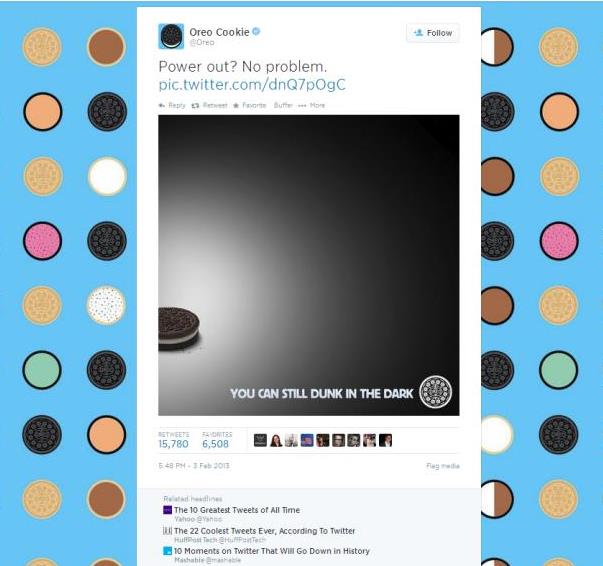While easily confused as another name for social media marketing, Real-Time Marketing is, in fact, a strategy which adds to a social media marketing plan. There is some debate around the subject as most marketers are aware of RTM, but do not fully understand exactly what it is.

RTM rose up in the 90s as a part of customer relationship management (CRM). Google Trends picked the term up around 2005, when digital marketers seized the concept for their own, but only in recent years has it really sparked in use. Interestingly though, social media marketing only sprung into the Google Trends view a year after RTM. This could possibly be attributed to the rise in web personalisation in 2005, which opened up a need for SMM.
Real-Time Marketing means engaging with your audience through content and product placement, which coincides with a specific event taking place in the world. As indicated, Real-Time Marketing is strongly associated with real-time web personalisation. There are two main points which make up the web personalisation aspect of RTM: real-time analytics and real-time response. These are tied together as they capture an audience’s attention, creating a call to action, all of which is based on user behaviour. So we can safely say that RTM is not solely based on, so to speak, opportunistic advertising, but it extends to a business in how they can be truly relevant in all meanings of the word. An example from the general public’s engagement with RTM on a more informal way, is the meme: a picture or a GIF which relates to a current event.
The difference between SMM and RTM
With Social Media Marketing, you have a content plan which is set up according to an editorial calendar. Real-Time Marketing on the other hand, is an impulse. Your content is based (and published) on what is happening as we speak. This extends from something as simple as responding to a customer’s query via your social network, to diving into a campaign which goes hand in hand with a current event. The goal is to be relevant, to be ‘in the moment’.
How to ‘Dive’ in to a RTM Campaign
- Identify the real-time event which your audience is most likely to relate to.
- Subtract the decay, i.e. identify when your reaction or engagement with the event will be absolutely irrelevant. Commonly, you would interact while the event is taking place.
- Add (relate) key aspects of the event to your brand.
There you have your company’s real-time marketing campaign. It is imperative that your brand connects to the event in a comprehensive way which will leave a lasting impression on your audience. If it is rather difficult and time-consuming to come up with your equation, perhaps this round is not meant for you. Rather pass on the opportunity and wait for one which is more relevant to your brand.
Oreo Takes a Bite of the RTM Cookie:
In February 2013, @Oreo was retweeted 15 000 times and increased their followers by 8000 in one night when they hit a bulls eye in a RTM effort during the Super Bowl in the States. The game experienced a power-outage and before you could say click, Oreo posted this on Twitter:

Slam-dunk! They had 2000 Instagram followers pre-game, post, it shot up to 36 000. This is Real-Time Marketing, implemented into a Social Media Strategy. Oreo’s VP said that despite this being created at a moment’s notice, the company was at the ready, waiting to prepare content for anything that might come up during the Super Bowl match – they anticipated something, without knowing exactly what it is. This is how you add a RTM strategy to your SMM plan.
With an RTM strategy, you will see one of two outcomes; either your content will be shared across networks a high speed, or the scheme will be a complete flop. That is the risk in taking a step into this direction.
Mari Roelofse is a Digital Journalist & Content Editor for Sound Idea Digital | mari@soundidea.co.za | Sound Idea Digital | www.soundidea.co.za
[Back]
blog comments powered by Disqus
